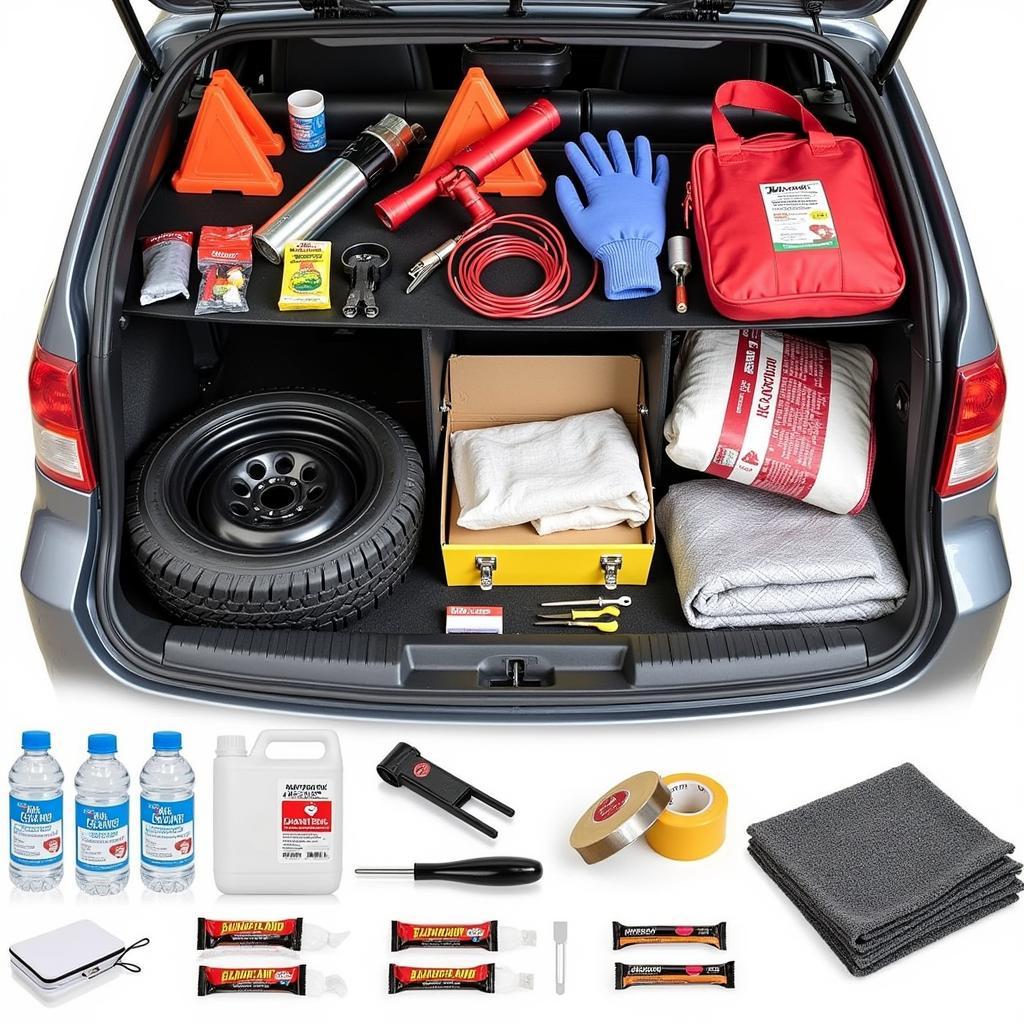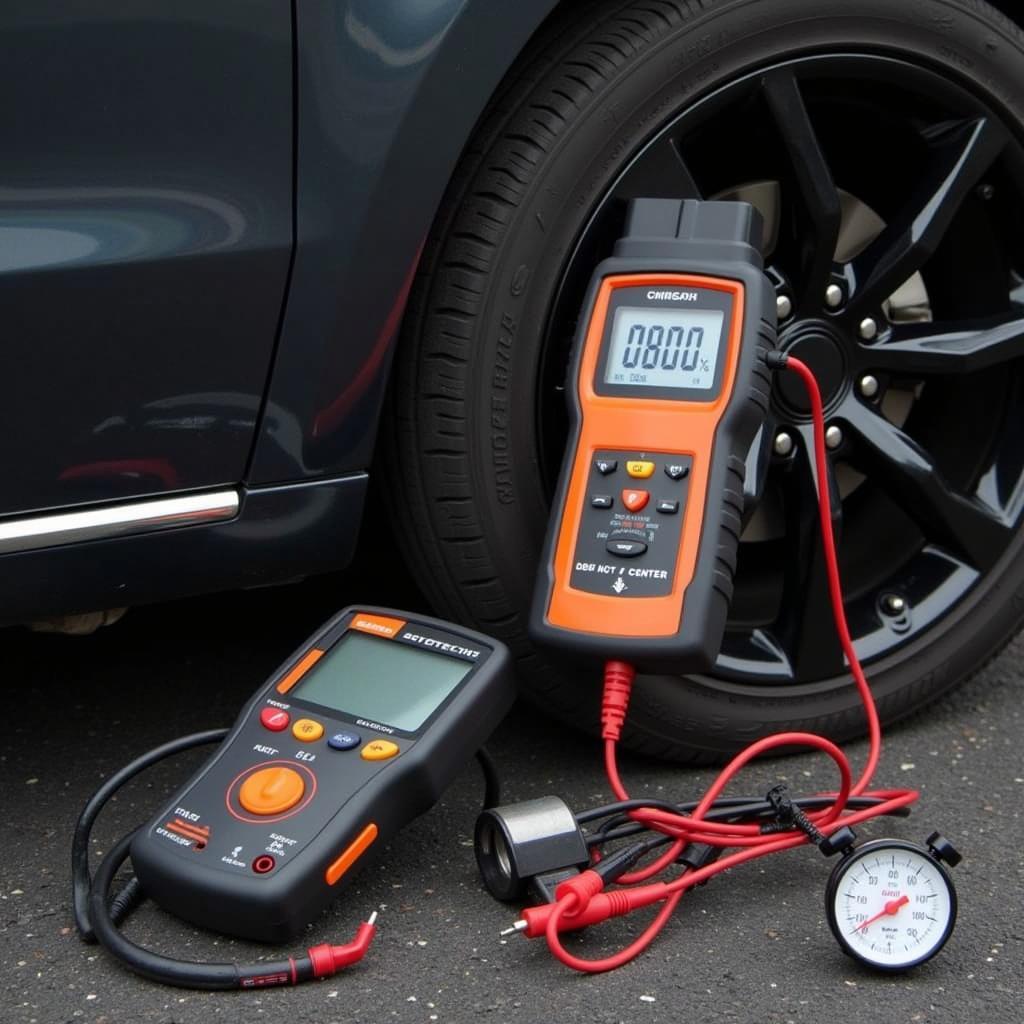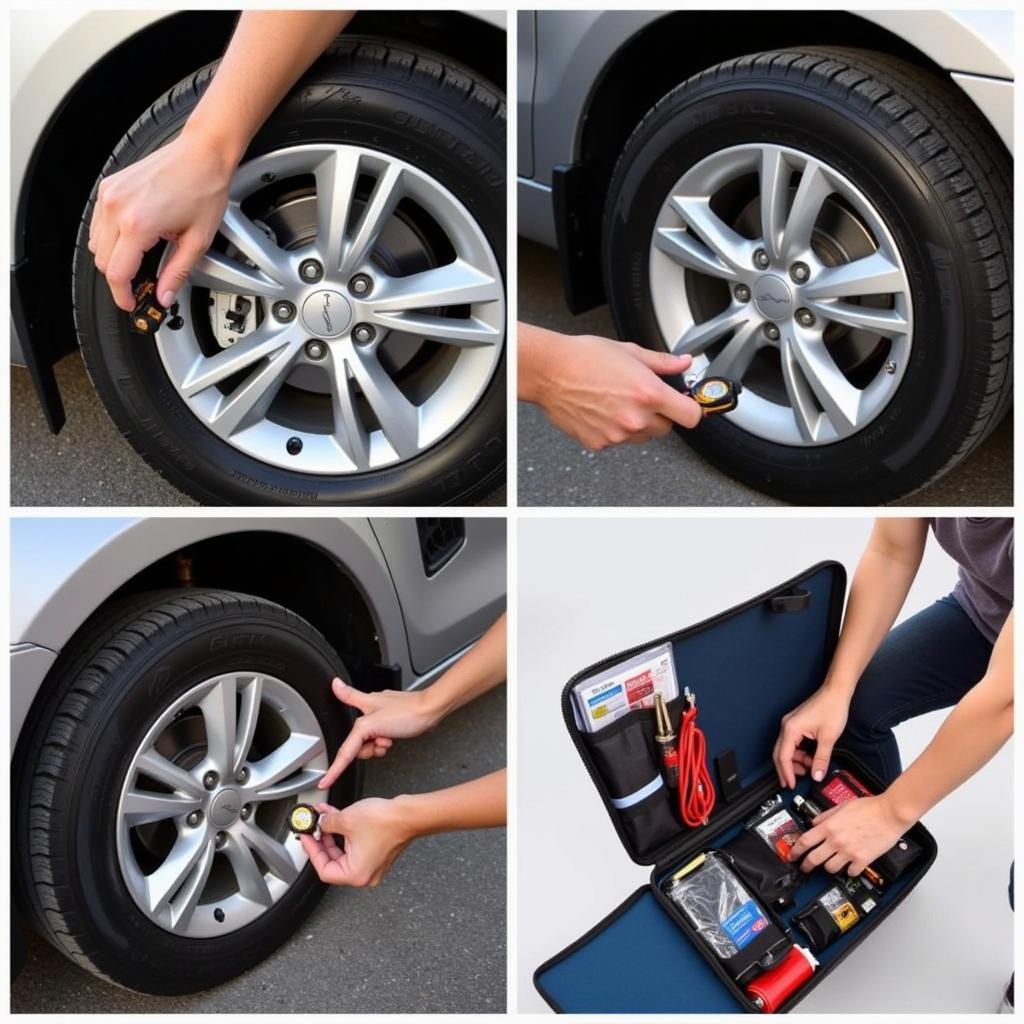Car safety tools are more than just gadgets; they’re your lifeline in unexpected situations. From basic essentials to advanced diagnostic equipment, having the right tools can be the difference between a minor inconvenience and a major roadside emergency. Having a car safety tool can make all the difference.
Why Car Safety Tools Matter
Every driver should prioritize safety, and that extends beyond safe driving practices. A well-equipped car safety kit empowers you to handle common car troubles, ensuring your safety and minimizing potential downtime. Whether it’s a flat tire, a dead battery, or a minor mechanical issue, having the right car safety tools on hand can prevent a stressful situation from escalating.
Building Your Essential Car Safety Kit
A comprehensive car safety kit should address a range of potential scenarios. Here’s a breakdown of essential items:
- Tire changing tools: Jack, lug wrench, and a spare tire are crucial. Make sure your spare is properly inflated.
- Jumper cables: A dead battery can strand you anywhere. Jumper cables are a must-have for a quick restart.
- First-aid kit: A well-stocked first-aid kit is essential for addressing minor injuries.
- Flashlight: Essential for nighttime visibility and signaling for help. Opt for a bright LED flashlight.
- Reflective triangles or flares: Warn other drivers of your presence, especially in low visibility conditions.
- Multi-tool or basic toolkit: A multi-tool or a small toolkit with essential screwdrivers, pliers, and a wrench can be invaluable for minor repairs.
- Gloves and rags: Keep your hands clean during repairs.
- Duct tape and electrical tape: These versatile tools can be used for temporary fixes in a pinch.
- Emergency blanket: Provides warmth in cold weather emergencies.
- Water and non-perishable snacks: Keep these on hand, especially for longer trips.
 Essential Car Safety Kit Items for Roadside Emergencies
Essential Car Safety Kit Items for Roadside Emergencies
Beyond the Basics: Advanced Car Safety Tools
For those who want to be extra prepared, or for professionals in the automotive industry, advanced car safety tools can be invaluable. These tools allow for more precise diagnostics and troubleshooting:
- OBD-II scanner: A powerful tool to diagnose engine trouble codes and identify potential issues. Knowing what tools to have in your car is essential.
- Tire pressure gauge: Regularly checking tire pressure is vital for safety and fuel efficiency.
- Digital multimeter: Useful for testing electrical circuits and components.
“A reliable OBD-II scanner is an essential car safety tool for any serious driver,” says automotive expert, David Miller. “It’s like having a mechanic in your glove compartment, helping you quickly identify and address potential engine problems.”
 Advanced Car Safety Tools including OBD2 Scanner and Multimeter
Advanced Car Safety Tools including OBD2 Scanner and Multimeter
Maintaining Your Car Safety Tools
Having the tools is only half the battle. Regular maintenance ensures your car safety tools are ready when you need them. This includes:
- Checking tire pressure regularly, including the spare.
- Inspecting jumper cables for fraying or damage.
- Replenishing your first-aid kit as needed.
- Testing your flashlight and ensuring it has fresh batteries.
- Familiarizing yourself with how to use each tool.
“Taking care of your tools is as important as having them in the first place,” advises Susan Carter, a certified mechanic. “Regular maintenance ensures they are reliable and ready to perform when you need them most.” It’s just as important as maintaining your car tire repair tool kit.
 Maintaining Car Safety Tools for Optimal Performance
Maintaining Car Safety Tools for Optimal Performance
Conclusion: Invest in Peace of Mind with Car Safety Tools
Car safety tools are an investment in your peace of mind. By equipping yourself with the right tools and maintaining them properly, you can handle unexpected roadside situations with confidence. Don’t wait for an emergency to realize the importance of being prepared. Start building your car safety kit today, and remember the importance of taking care of tools.
FAQs
-
What is the most important car safety tool? A well-maintained spare tire, jack, and lug wrench are essential for dealing with flat tires.
-
How often should I check my car safety kit? It’s recommended to inspect your kit every three months to ensure everything is in working order and replenish any used or expired items.
-
What should I do if I have a car emergency at night? Turn on your hazard lights, place reflective triangles or flares around your vehicle, and stay inside your car until help arrives.
-
Where should I keep my car safety kit? Your trunk is the most common and convenient location for your car safety kit.
-
Do I need an OBD-II scanner if I’m not a mechanic? While not strictly necessary, an OBD-II scanner can be a helpful tool for diagnosing car problems and potentially saving you money on repairs.
Common Scenarios and Questions
-
Scenario: You are driving on a long road trip and experience a flat tire in a remote area.
-
Question: How do I change a flat tire safely?
-
Scenario: Your car battery dies in a parking lot late at night.
-
Question: How do I use jumper cables to start my car?
Further Exploration
For more information on car safety and essential tools, check out our articles on what tools to have in your car and car safety tool.
Need Assistance? Contact us via WhatsApp: +1(641)206-8880, Email: [email protected] or visit our office at 910 Cedar Lane, Chicago, IL 60605, USA. We offer 24/7 customer support.

Leave a Reply